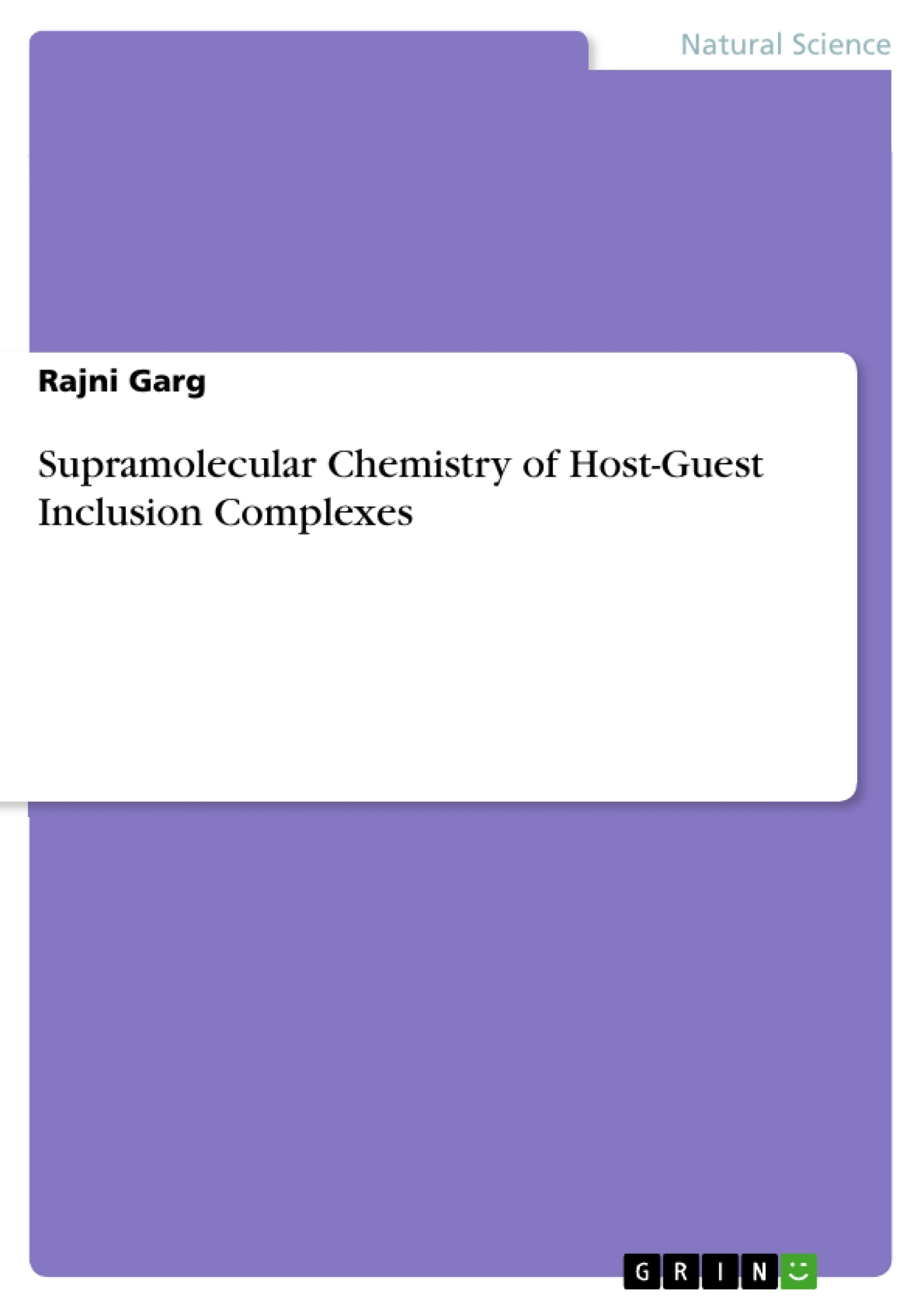Supra-molecular chemistry is one of the most popular areas of experimental chemistry because of the presence of a number of supra-molecular assemblies in nature. SURFACTANTS and CROWN ETHERS, representing the Colloidal systems and Macrocycles respectively, are the two significant parts of supra-molecular chemistry. The present work is based on the aim to study the crown ether- surfactant interactions.
Inhaltsverzeichnis (Table of Contents)
- Supramolecular Chemistry of Host-Guest Inclusion Complexes
- The Basic Difference Between Classical and Supramolecular Chemistry
- Colloidal Systems and Supramolecular Chemistry
- Surfactants
- Classification of Surfactants
- Properties of Surfactants
- Micelles
Zielsetzung und Themenschwerpunkte (Objectives and Key Themes)
This text aims to provide an overview of supramolecular chemistry, focusing on the formation and characteristics of host-guest inclusion complexes. The text explores the differences between classical and supramolecular chemistry, highlighting the role of non-covalent interactions in supramolecular systems.
- The nature of supramolecular interactions and their role in forming supramolecular assemblies
- The formation and properties of host-guest inclusion complexes
- The significance of colloidal systems in supramolecular chemistry
- The properties and classification of surfactants
- The self-assembly of surfactants into micelles
Zusammenfassung der Kapitel (Chapter Summaries)
The text begins by introducing the concept of supramolecular chemistry and its importance across various scientific disciplines. It then delves into the fundamental differences between classical and supramolecular chemistry, emphasizing the role of non-covalent interactions in supramolecular systems.
The text further discusses the significance of colloidal systems in supramolecular chemistry, highlighting their applications in diverse fields like detergents, emulsifiers, and biological membrane formation. The focus then shifts to surfactants, defining their structure, classification, and properties. The text concludes by explaining the concept of micelle formation, emphasizing how the self-assembly of surfactant molecules leads to the formation of these aggregates.
Schlüsselwörter (Keywords)
This text focuses on the following key concepts: supramolecular chemistry, host-guest inclusion complexes, non-covalent interactions, molecular recognition, colloidal systems, surfactants, micelles, self-assembly, and amphiphilic molecules.
- Arbeit zitieren
- Dr. Rajni Garg (Autor:in), 2012, Supramolecular Chemistry of Host-Guest Inclusion Complexes, München, GRIN Verlag, https://www.grin.com/document/187894



